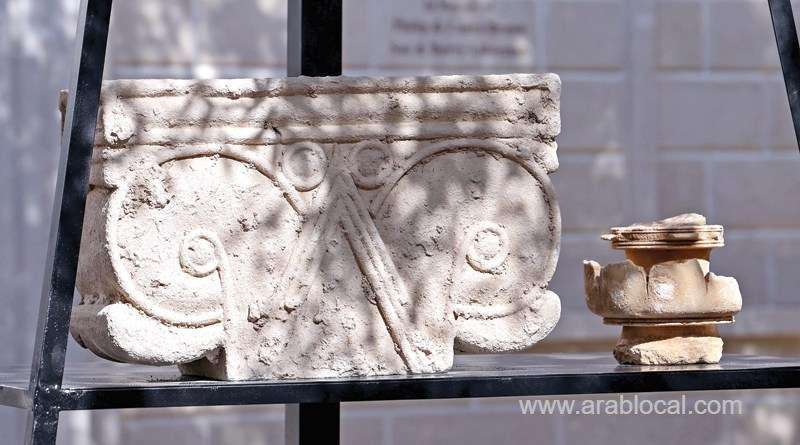
Israeli archaeologists unveiled on Thursday unique 2,700-year-old stone carvings indicating a rebound in prosperity in the Kingdom of Judah following the near destruction of ancient Jerusalem.
The two limestone blocks, roughly 50 centimetres wide, have almost perfectly preserved proto-Aeolic carvings reminiscent of spiralling ram horns.
The items known as capitals are believed to have topped pillars in the courtyard of a building that was completely destroyed.
The Aeolic was an early form of classical architecture developed from Phoenician styles, according to the Ancient History Encyclopedia.
The find was made in November by Israel Antiquities Authority (IAA) archaeologist Yaakov Billig in preliminary works for construction of a visitor centre on the Armon Hanatziv promenade, which lies a few kilometres south of Jerusalem’s Old City.
Two blocks were uncovered, one on top of the other. A third was found a few weeks later.
Larger proto-Aeolic capitals used on pillars in doorways have been found in areas that were part of the Kingdom of Judah.
The kingdom was centred on Jerusalem and lasted from around 940 to 586 BC, before being destroyed by the Babylonian king Nebuchadnezzar.
The design is typical of the First Temple era and is a symbol representing the kingdoms of Judah and Israel.
Its image is imprinted on Israel’s contemporary five-shekel coin.
The “medium-sized” models from Armon Hanatziv are the first of their size to be found, Billig said.
Smaller capitals that were part of window sills were also found at the site of what Billig said was presumably a “royalist estate”, or at the very least the palace of an extremely wealthy person.
The palace was probably built between the reigns of King Hezekiah and King Josiah, in the period when Jerusalem was recuperating after the Assyrian siege in 701 BC, said Billig.
The IAA recently uncovered other finds from the same era in the area, such as another palace and an administrative centre, all a short distance from ancient Jerusalem and testifying to significant regal and administrative activity.
“It shows that at that certain time period, someone decided that it was possible and safe to make a wonderful palace, an estate, on the mountain region outside of the city,” Billig said.
The three capitals, defined by IAA Jerusalem district archaeologist Yuval Baruch as “extraordinarily important”, raise a new crop of questions, such as why they were preserved while nearly all other remains from the palace were plundered.
SOURCE: OMANOBSERVER